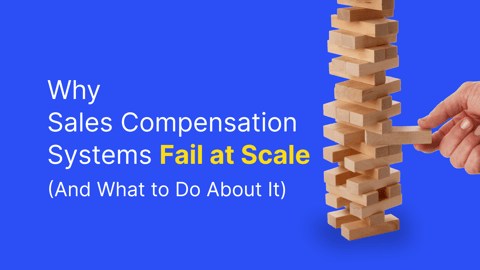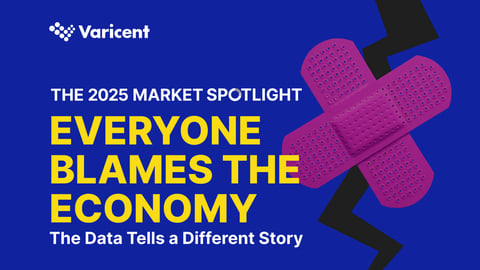The word “journey” is pretty much part of most topics of conversation. Whether that’s a career, life milestones, or even for an actual road trip. In this blog written for those working in the sales arena, the journey takes on a different route. We’re following the path from investing in the right SPM software platform for your business, through installation, and right on to the checkered flag that indicates sales success and increased efficiency. As well as making it clear what the rewards are for deciding on a customizable, single platform, we’ll make sure you recognize and swerve the hazards of a poorly managed sales performance management (SPM) system that can potentially block your way. So, please join us on a sales performance management journey where improved operations and profitability are the prizes awaiting you at the finishing line.
Understanding Your Business’s Requirements
This is a great example of where Sales Executives can partner with Sales Operations, and possibly RevOps. You may be asking yourself why this is. It’s the front-line sales team that can articulate what is and isn’t working for them right now, for example, a sense of frustration at an erroneous compensation scheme or an SPM software system that’s hard to access or understand. Sales Operations can take this feedback and create a case for a better system and how that installation could go. RevOps are there to work out whether there is a budget for this and whether the people in the boardroom will give the green light.
Therefore, if you and your team have been tasked with creating the business plan, make sure you provide more than costings and projections; present case studies and proven UX findings to give context, or physically demonstrate the difference a new or improved software system could make at scale for better resource allocation and more informed, smarter decisions.
What Should You Look for in Your Sales Performance Management (SPM) Software System?
Ahead of laying out the myriad benefits of an effective SPM software system, some key features need to be on your shopping list.
1. Functionality: What does the SPM do? At the very least, it should be an integrated platform for all elements of the sales function, including automating compensation, displaying quota, and territories that can be easily accessed from any device at any time.
2. Ease of Installation and Use: One of the bugbears of adapting to a universal system, is that it turns out it’s not very universal at all. We can add this to the business case, finding out how long will it take to install, how much training will be needed, and does IT support come as part of the package?
3. Customization: Every business has a different set of needs when it comes to SPM software, so it’s reassuring to know that as requirements change, that with a robust platform, numerous extra functions can be easily incorporated into your existing system. Great dashboards should provide real time insights that help you and your team plan smarter.
4. Dashboards that are more than nice to look at: A great dashboard is certainly an improvement on an over-complicated, hard-to-decipher spreadsheet, but the information displayed needs to have both value and meaning. It’s the graphical output to all that data, so make sure that if you want to know, for example, which territory is on target, that’s what’s on the screen.
5. Access to both historical data, current reporting, and projections/strategy for the future: Many SPM software systems, possibly those that you have worked with, are up to the job when it comes to producing historical reporting on products or person performance, but not so much when it comes to the projected analysis of how to set quotas for a new sales strategy. Or conversely, you may simply want to look at how a team has achieved targets going back over five years and that information is not available, or not entirely accurate. A good system covers this equally well and won’t block out essential personnel that needs to view or download the data.
The Benefits of a Good SPM Software System
No SPM software system is of any value — no matter how cool it may look — without it being able to pin down some tangible and long-lasting benefits to your business. After extensive research and interviews with sales organizations, we published the results within the Forrester study, identifying the main advantages.
Sign up here to download your copy today:
- Improved operations and efficiency: Higher productivity rates and more streamlined processes mean less time is wasted. The SPM software enables users to get on with their job, access information, and data, and understand their job roles and responsibilities. The net result of this is strategic objectives remain aligned and KPIs are met, and the output can contribute to a fairer and even performance review.
- Accurate sales and revenue forecasting: It’s this outcome that is the holy grail of the sales world. Every further element – the distribution of territories, the possibility of commission, and the prospect of profit – depends on the data that comes from the SPM.
- Better communications: One business, one huge sales division, and many different sub-teams. That can result in a huge number of conflicting conversations. What can bring them into a unified state is an SPM that means knowledge and numbers are known, pain points are shared, and solutions are universal.
- Greater transparency: Any system that removes or reduces unnecessary secrecy can only be a good thing. The opaqueness that can distort quota distribution, for example, can be removed with an SPM software system that reveals all quotas as well as the strategic planning behind them. This is especially important in uniting RevOps and Incentive Comp teams, which are often disconnected but can make a tremendous impact on the organization when collaborating well.
- Shatter-proof ICM: This is ideal for rolling out new and improved Incentive Compensation Management (ICM) Programs as the software can help reduce the incidents of over-, or under-payments. This also eliminates the issue of shadow accounting where there is such mistrust in a commission pay-out system where individuals are attempting to work out their own figures. And the fewer time sales operations spend having to talk through compensation queries, the more time they get back for more important, business-critical tasks.
- Motivated, loyal workforce: With a strong and reliable SPM software platform in place, it’s not just the bottom line that benefits, it’s the people and culture within the company. Your sales force implicitly trusts the analytics and therefore has greater faith in the decision-makers as well.
A new or updated SPM software system has the power to be transformational. No longer just a repository for information, a great one can drive sales, strategy, and performance.
Discover more about how Varicent’s software solution could help boost your ROI and bottom line by downloading the Forrester Economic Study today.




